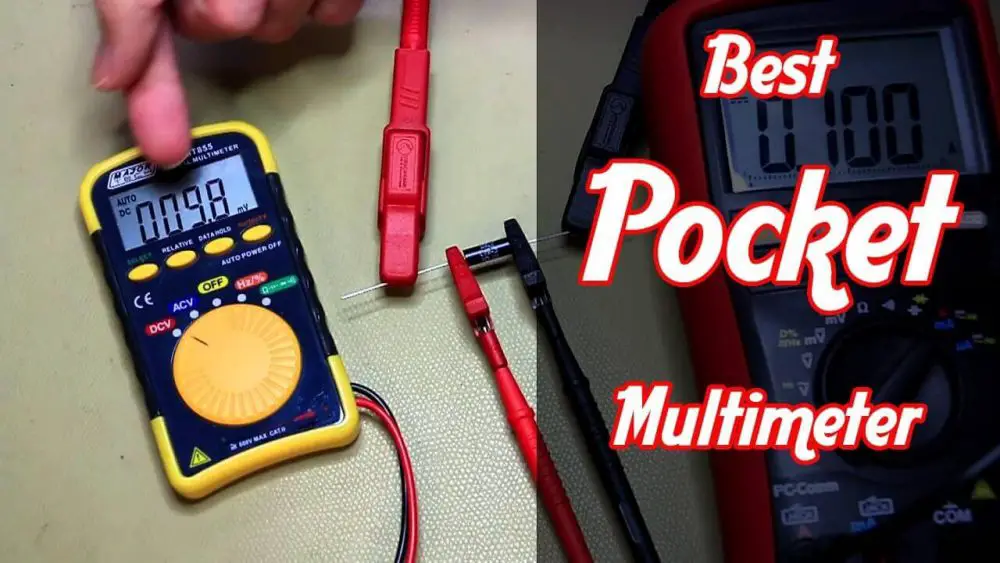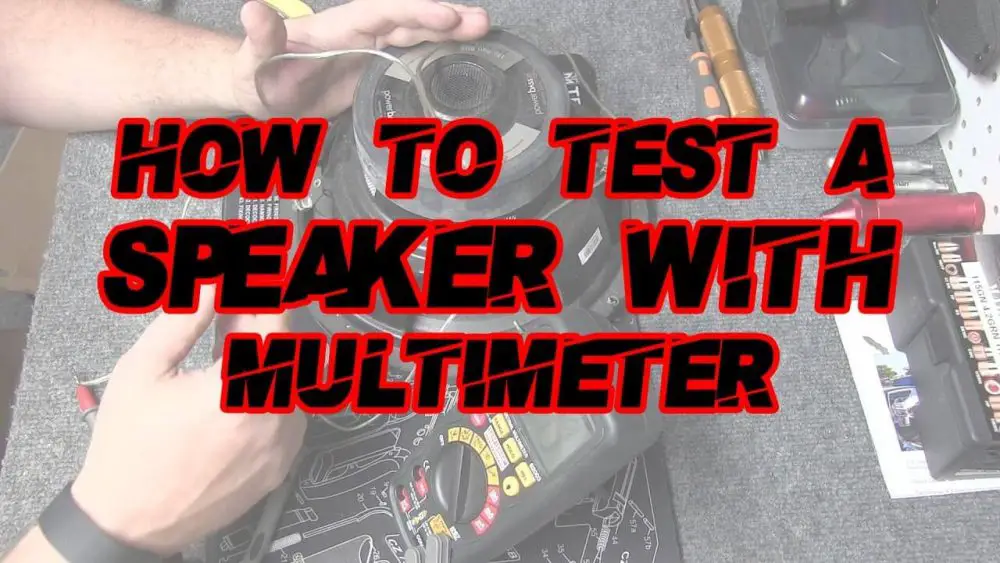How to test car speaker wire with multimeter
When you want to listen to your favourite music or catch up on the latest television show, but your speakers won’t play it, it’s frustrating. Sometimes it’s hard to get things done.Thankfully, you can take some easy steps to test your speaker wiring for faults and quickly fix this problem with the help of a multimeter.
Moving speaker wires causes them to fray or even break over time. If this fails, the sound may be distorted or, worse, there may be no sound at all. Even after inspecting the wire, the problem is not always obvious. So, how will you know if the wire is broken if you can’t see it?
Table of Contents
Possible Problems with Your Car Speakers & Wiring

If you are facing sound issues, there could be several possible issues.
Car wiring Connections:
A lot of the time, wires and connections come loose or break. Look at the whole area to see what can be done to make it better. Aside from that, the problem could be with the speaker wires themselves. We’ll talk about how to test that soon.
Speakers Grounding wire:
If the ground wire is loose or has come loose, you may have a problem. Tightly secure the wire in a safe location. A buzzing or whining sound can be heard if the ground wire is the problem.
Car Amplifiers:
Check how your amp is set up. You should also make sure the connections are safe.
Car Speakers:
Most people are familiar with the sound of a broken speaker. Because this problem cannot be fixed, you will need to purchase a new speaker. You might notice the cracked speaker as well.
Read more: How to test battery with a multimeter
Test Speaker Wiring with a Multimeter
1. First of all Turn off All the Equipment:
When working with electronics, this is a critical safety step. If you don’t, you risk causing a short or damaging the parts in other ways. You don’t want to be dealing with multiple problems because you didn’t turn off the power and fix a simple wire problem.
2. Remove all the Speaker Wires:
First, take out all the wires from the box. This is important for both the positive and negative wires. Then, just press the two clips that hold the wire in place or twist the connectors counterclockwise if that is how your system is set up.
The next thing you need to do is take the wires off the stereo receiver. Do not try to take the wire out while the lock is still in place. To get the wires out, you may need to press the clips together, use an electric screwdriver (like this one), or twist the lock.
3. Connect Wires:
After you take the wires out of the stereo and the speaker, you can make a circuit. At one end, twist two separate cables together. Now you have a closed circuit that can be used to check for continuity.
Don’t twist the wire too tightly. In the future, you may have difficulty separating the wires, which could result in damage.
4. Setup your Multimeter:
Switch on the multimeter and set the dial to Ohms. This option allows you to test resistance, which we will do on the speaker wires. Before you test the speakers, make sure the multimeter is in working order. Connect the black and red probes.
The meter should read 0 Ohms, which means “no resistance.” According to what I’ve read, everything appears to be in order. If you get a different result, there could be a problem with your multimeter. Before proceeding, you should consider purchasing a new multimeter.
5. Test Your Wire:
Connect the two probes of the multimeter to the bare wires of the speaker in the circuit. Make sure to do the same thing with the two wires you didn’t twist together. If “infinite resistance” shows up on your multimeter, the wire has a cut or break somewhere. The wire tells you that it needs to be changed.
If the cable has a small amount of resistance, everything inside the speaker wire is fine, but you are having other sound problems.
Read more: How to test a Speaker with a Multimeter
Test Speakers Wiring with a Battery
If the wiring looks fine, then the problem could be with the speaker itself. On the other hand, the test could be done with a 9-volt battery.
- Connect the leads of your speaker to your 9-volt battery. Connect the positive to the positive end of the battery, and connect the negative to the negative end. If the speaker starts to pulse, the wire is in the right place.
- If you see a pulse coming from the speaker, it means it is still operational.
- The tweeter speaker can be treated in the same manner as the woofer speaker.
Things to do:
- Do not keep the 9-volt battery connected to your speaker for a long time, as this could damage the speaker.
- Always perform a physical inspection of your multimeter before usage. If you notice any signs of damage, you need to assume it isn’t working correctly. To help keep the multimeter in good shape, always store your probes and unit in a protective case while not in use.
- You also need to look at the probes. There shouldn’t be any damage on the outside, and all of the connections should be safe. You can feel the probes with your fingers to see if the insulation is broken. If it is, you can’t fix it. You’ll have to buy new probes. If the probes on a multimeter are broken, you shouldn’t use it.
Safety Precautions
When you work with things that use electricity, you could get an electric shock. You should be aware of it, even if it isn’t always bad.
Here are some steps you can take to minimize your chances of electrical shock.
- When performing electrical work, never work alone. It’s always a good idea to have someone with you.
- When it’s necessary, wear safety gear. This means things like hats and gloves. Always use an insulated rubber mat when working with currents that are over 50 volts or are exposed.
- Don’t take your measurement in humid or damp conditions.
- Observe your multimeter closely and be aware of any signs that there is something wrong. Any irregularity could be unsafe.
- Watch for anything in the atmosphere that could be hazardous. That includes flammable dust.
Just because you are working on a small electrical project doesn’t mean you aren’t at risk. It is always best to be safe when working around equipment that could hurt you.
Read more: How to test a car fuse with a multimeter
Frequently Asked Questions:
What happens if you connect car speaker wires backwards?
When the speaker cable is put on backwards, the bass tends to be less strong. When the polarity is switched, the bass frequencies are most affected. It changes how the cone of a speaker makes low-frequency sounds.
Fortunately, connecting speaker wires in opposite polarity will not damage the speaker or the amplifier (assuming all the connections are proper). However, swapping the positive and negative speaker wires at the speaker or amplifier end will automatically alter the speaker’s polarity within the system.
Conclusion:
Trying to figure out what’s wrong with your sound system can be a hassle, but it doesn’t have to be. You can easily fix other problems with your speakers, and the wires can be fixed quickly. This is a common problem, so get out your multimeter and check the wiring for your speakers. If that doesn’t show anything, test the rest of your system.
Related posts:
How to Test Purge Valve with Multimeter



